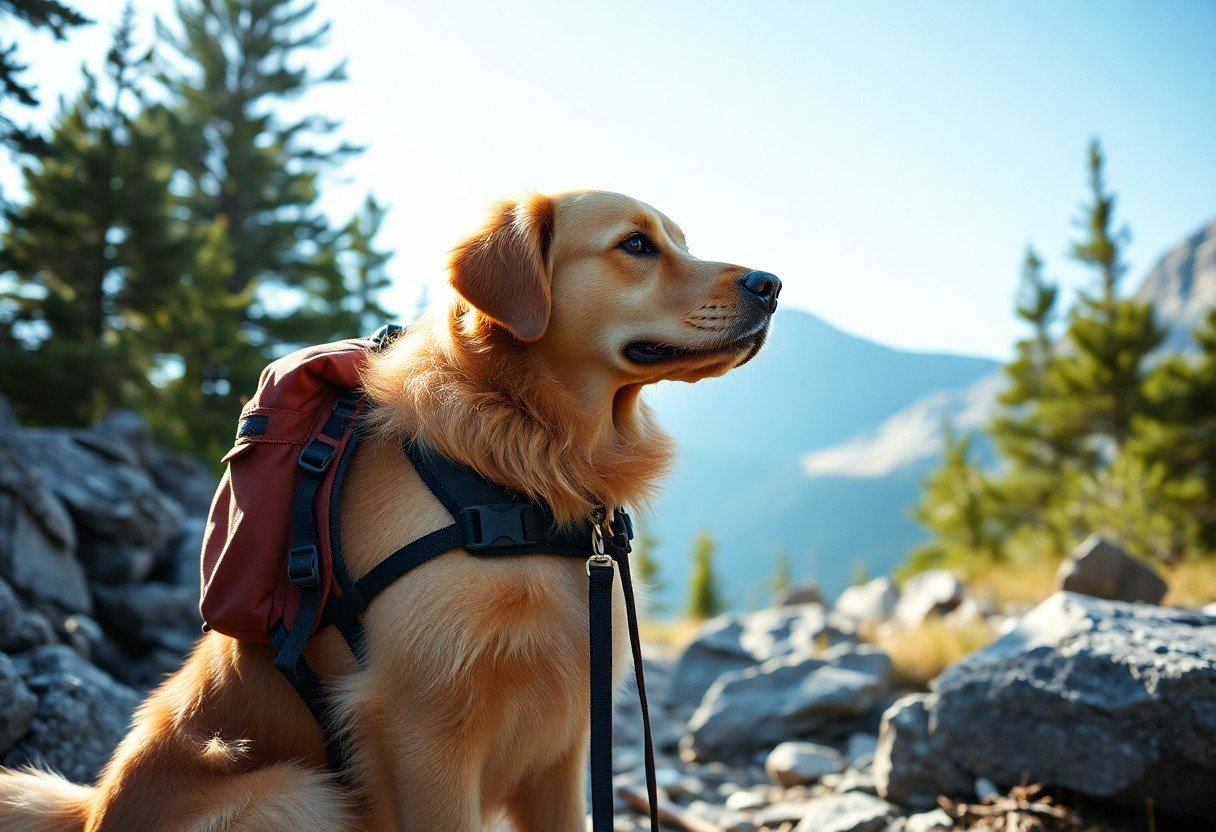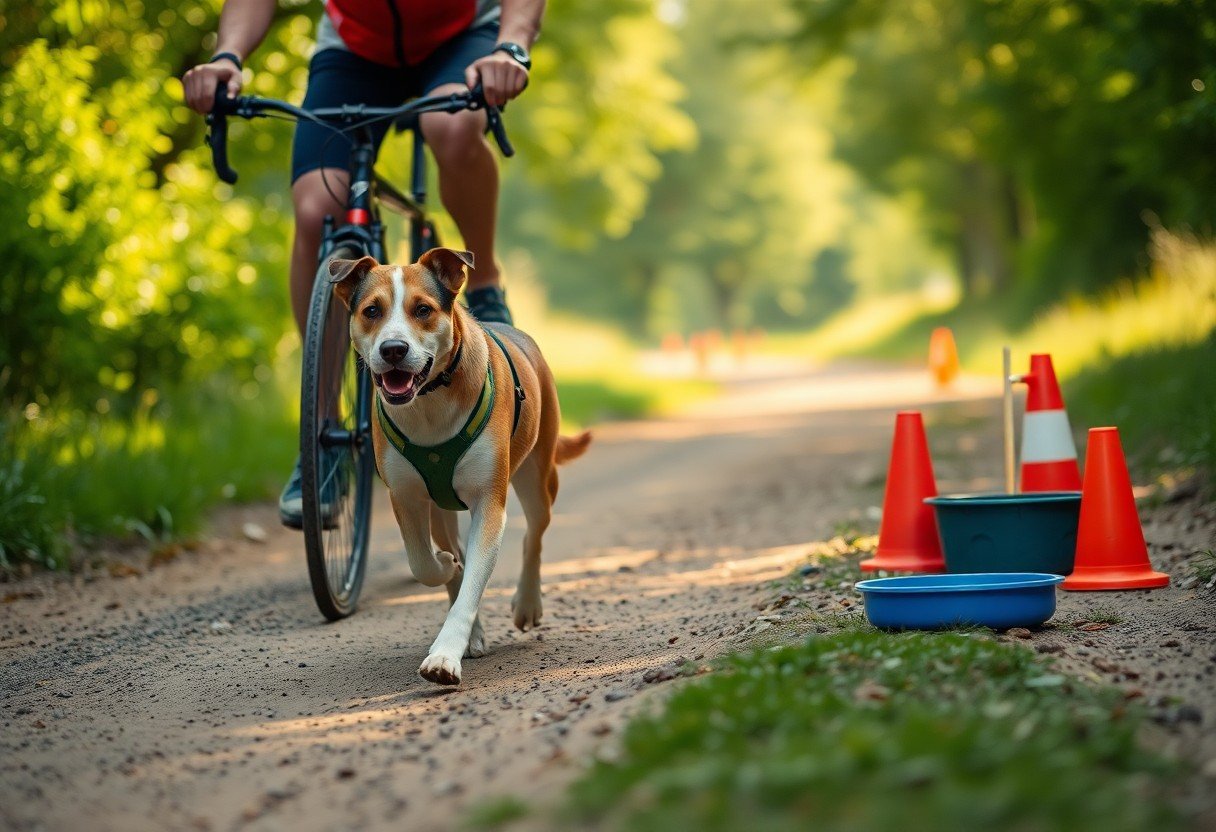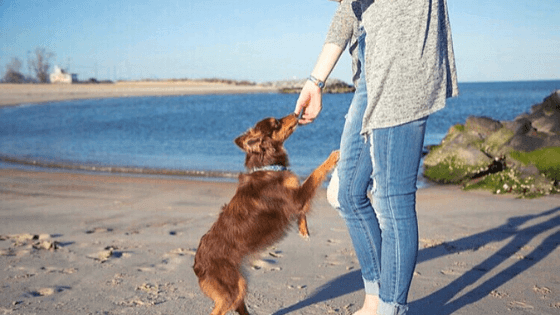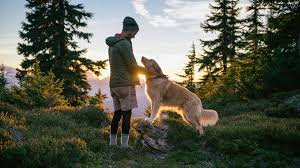Over time, your pup can transform from a sleepy couch companion into a confident adventure buddy. With the right training techniques, you can equip your dog with the skills needed to tackle the great outdoors safely and effectively. Focus on building endurance, enhancing obedience, and fostering positive behaviors to ensure your furry friend enjoys every hike, run, or camping trip. This guide will help you navigate the journey from homebody to trailblazer.

Key Takeaways:
- Gradually introduce your dog to new environments and activities to build confidence.
- Use positive reinforcement techniques to encourage desired behaviors during training sessions.
- Incorporate regular exercise and socialization to promote a well-rounded adventure dog.
Understanding Your Adventure Dog
Getting to know your dog’s unique personality and needs is imperative for outdoor success. Each breed possesses distinct traits that may affect their performance in various environments. Evaluate their energy levels, temperament, and natural instincts to select suitable adventures. For insights on shaping your dog’s adventure training, visit How to Train an Adventure Puppy.
Assessing Your Dog’s Breed and Traits
Understanding your dog’s breed characteristics helps tailor your training approach. For instance, sporting breeds like Retrievers typically thrive in active settings, while toy breeds may prefer shorter outings. Align your adventures with their natural inclinations for a more fulfilling experience.
Recognizing Fitness Levels and Limitations
Fitness levels vary widely among dogs; some may jog for miles while others tire quickly. Assess your dog’s current physical state, factoring in age, health, and endurance. Regular check-ups with your vet can reveal any pre-existing conditions that may impose limits, ensuring that your adventures are both safe and enjoyable.
Incorporating fitness assessments as part of your training will help you create an effective plan. Start slowly and gradually build your dog’s stamina through shorter hikes and progressively more challenging terrains. Pay attention to signs of fatigue such as excessive panting or hesitance to continue. With consistent monitoring and patience, you’ll help your dog develop a strong foundation for future adventures.
Essential Training Techniques
Mastering important training techniques sets the foundation for your dog’s adventurous life. By establishing reliable behavior patterns, you ensure that your pup can navigate new environments safely and confidently. Focus on consistent routines and positive reinforcement to encourage desirable behaviors, making training an enjoyable experience for both you and your dog.
Basic Obedience Skills
Basic obedience skills form the bedrock of any adventure dog’s training. Commands such as sit, stay, come, and leave it are invaluable in various scenarios, especially during outdoor excursions. Regular practice helps reinforce these commands, ensuring your dog responds promptly, which is important for their safety and your peace of mind.
Advanced Commands for Outdoor Safety
Advanced commands enhance your dog’s safety while exploring. Teaching commands like heel, drop it, and wait can keep your pup away from dangers in the wild, ensuring they stay by your side in challenging situations. These commands help establish boundaries for your dog, allowing you to enjoy outdoor activities without worry.
Advanced Commands Overview
| Command | Purpose |
| Heel | Controls your dog’s position next to you. |
| Drop It | Prevents your dog from swallowing harmful objects. |
| Wait | Stops your dog before crossing a street or jumping. |
| Emergency Recall | Quickly summons your dog in dangerous situations. |
Advanced commands not only improve safety but also strengthen the bond between you and your dog. Consistent training sessions, combined with positive reinforcement, will help your dog master these commands effectively. You might find that using a high-value treat or favorite toy as a reward significantly increases their motivation to learn. By integrating these techniques into your training routine, your dog will more likely respond appropriately during unexpected outdoor encounters.
Advanced Commands List
- Heel
- Drop It
- Wait
- Emergency Recall

Building Stamina for Outdoor Activities
Transitioning your pup from a cozy couch companion to an outdoor adventurer requires a focus on building stamina. Start with short, engaging activities and progressively increase the duration and intensity of exercises. Incorporating hikes, trail walks, or even running in short bursts will help your dog adapt to the demands of outdoor adventures while enhancing overall fitness levels.
Gradual Conditioning Routines
Begin your dog’s journey into fitness with a few minutes of brisk walking each day, gradually increasing the length of your walks by 10-20% weekly. Add terrain changes like hills or inclines and introduce light running sessions, allowing your pup to adjust to the increased effort. Consistency and patience will pay off as their endurance builds.
Incorporating Fun and Engagement
Training shouldn’t feel like a chore for your dog. Incorporate playful elements into your conditioning routines by adding games like fetch or tug-of-war before or after your walks. Using toys they enjoy can create positive associations with outdoor activities, increasing their enthusiasm to join you on more adventurous outings.
Engaging your dog in creative ways can significantly boost their motivation. Consider using interactive toys that stimulate their mind while you walk or run together. Trail games, such as hide-and-seek with treats or exploring new scents, also encourage your pup to stay active while making the experience enjoyable. Mixing in these elements not only builds stamina but also strengthens the bond between you and your adventure buddy.
Gear and Equipment for Adventure Dogs
The right gear can significantly enhance your adventure dog’s experience, ensuring safety, comfort, and functionality as you explore the great outdoors together. Choosing high-quality, durable equipment tailored to your dog’s size and activity level will make your excursions more enjoyable and worry-free. Invest in gear that not only meets your pup’s needs but also stands up to rugged conditions, enabling both of you to tackle trails with confidence.
Choosing the Right Leash and Harness
Your dog’s leash and harness are fundamental for adventure outings. A sturdy, adjustable harness distributes pressure evenly, protecting your dog’s neck during sudden pulls. Look for a harness equipped with a back handle for extra control, which is beneficial in challenging terrains. Opt for a leash with a comfortable grip that allows for quick adjustments in length, ideally around six feet, to give your dog freedom while keeping them safe.
Essential Gear for Safety and Comfort
Essential gear for your adventures should always prioritize your dog’s safety and comfort. Items like a first-aid kit designed for pets, reflective gear for visibility, and booties to protect their paws from rough terrain are indispensable. Additionally, a compact dog backpack lets your furry friend carry their own vitals, promoting their physical engagement while maintaining convenience for you.
When deciding on safety gear, consider a first-aid kit that includes antiseptic wipes, bandages, and tweezers for ticks. Reflective or brightly colored vests help ensure your dog is seen during twilight hikes. Booties can protect their paws against sharp rocks, thorns, or hot surfaces, which is vital during summer excursions. A well-fitted dog backpack can carry doggie water bowls, treats, and extra layers, ensuring your pup is prepared for varied conditions. Prioritize their well-being with gear tailored for adventure, transforming every outing into a positive experience.
Nutrition and Hydration for Active Dogs
A well-balanced diet and proper hydration are crucial for maintaining your dog’s energy levels during outdoor adventures. Choosing high-quality dog food tailored to the needs of active dogs not only fuels their stamina but also aids in recovery post-activity. For more insights, check out these Tips for Training an Adventure Puppy.
Tailoring Diet for Energy Needs
Choosing the right food for your active dog is vital. Look for foods high in protein and fat to support your dog’s energy requirements during rigorous activities. Consider adding *dog-safe* fruits and vegetables for additional nutrients. If your dog participates in extended adventures, increasing their caloric intake by about 10-20% might be necessary to keep their energy up without compromising health.
Keeping Your Dog Hydrated on the Go
Hydration is crucial to prevent overheating and fatigue. Carry a collapsible bowl and fresh water during hikes, ensuring your dog drinks regularly. For long outings, consider a hydration backpack designed for dogs, which allows them to drink easily on the move.
On hot days, dogs can easily become dehydrated, so offer water breaks every 30 minutes, especially during intense activities. Monitor for signs of dehydration such as excessive panting or dry gums. Consider using portable water bottles designed for dogs to streamline hydration while you’re on the trail. Proper hydration keeps your dog alert and able to enjoy every adventure with you.
Adventure Planning and Safety Tips
Effective adventure planning ensures you and your furry friend enjoy exciting and safe excursions. Start by evaluating your dog’s fitness level and choose trails that match both your capabilities. Always check the weather forecast, pack important gear including water, and ensure your dog is properly hydrated. Consider using a GPS tracker for added safety, enabling you to monitor your dog’s location. Keep the journey enjoyable by gradually increasing distance and difficulty. Perceiving potential dangers can make a significant difference in your outdoor experiences.
Preparing for Different Environments
Adapting your dog to various environments is key for successful adventures. Begin with short trips to local parks or fields before tackling more challenging terrains. Ensure your dog is comfortable on diverse surfaces, like sand, gravel, and rocky paths. Gradually expose them to different climates, such as heat or cold, while monitoring their behavior and well-being. Proper socialization with other animals can also enhance their confidence, making them more adaptable to new settings.
Recognizing and Avoiding Hazards
Identifying hazards on the trail is important for your safety and that of your dog. Potential threats include wildlife encounters, toxic plants, and sharp objects. Learn to recognize the signs of heat exhaustion or hypothermia, as changes in your dog’s energy levels indicate distress. Additionally, watch for aggressive animals or unstable terrain that could lead to injuries. Creating a plan for emergencies can significantly reduce risks during your outings.
Hazards can significantly disrupt your adventure if not addressed early. For instance, certain plants such as rhododendrons or foxglove can be toxic to dogs, leading to serious health issues. Stay alert for signs of wildlife like snakes or bears, knowing the best ways to react in those scenarios. Regularly inspect your dog’s paws for cuts or abrasions from rough terrain, which can easily turn an enjoyable adventure into a painful experience. While enjoying the outdoors, maintain vigilance to ensure both you and your canine companion remain safe and have an unforgettable experience on the trails.
To wrap up
With these considerations in mind, you are well-equipped to transform your couch pup into a confident trailblazer. By focusing on proper training, gradual exposure to new environments, and maintaining a positive mindset, you can create rewarding adventures for both you and your furry companion. Prioritize safety and adaptability, and you’ll find that every hike and outdoor excursion deepens the bond between you and your adventure-ready dog.
FAQ
Q: What are the best training methods for preparing my dog for outdoor adventures?
A: Positive reinforcement techniques, such as rewarding your dog with treats or praise for good behavior, can be highly effective. Start with basic commands like “sit,” “stay,” and “come” in a distraction-free environment, and gradually introduce these commands in more stimulating surroundings. Incorporate leash training to ensure your dog walks calmly beside you during hikes.
Q: How can I ensure my dog is physically ready for hiking and outdoor activities?
A: Gradually increase your dog’s fitness level by starting with shorter walks and gradually extending the distance and difficulty. Include a mix of flat trails and more challenging terrain. Monitor your dog’s energy levels and provide ample breaks for hydration and rest. Conditioning exercises, such as running or agility drills, can also help build strength and stamina.
Q: What equipment do I need to train my adventure dog effectively?
A: Essential equipment includes a well-fitted harness, a sturdy leash, and training treats. Consider using a backpack designed for dogs to help them get used to carrying gear during hikes. Additionally, invest in a good-quality collar with an ID tag and a GPS tracker for added safety during outdoor explorations.






